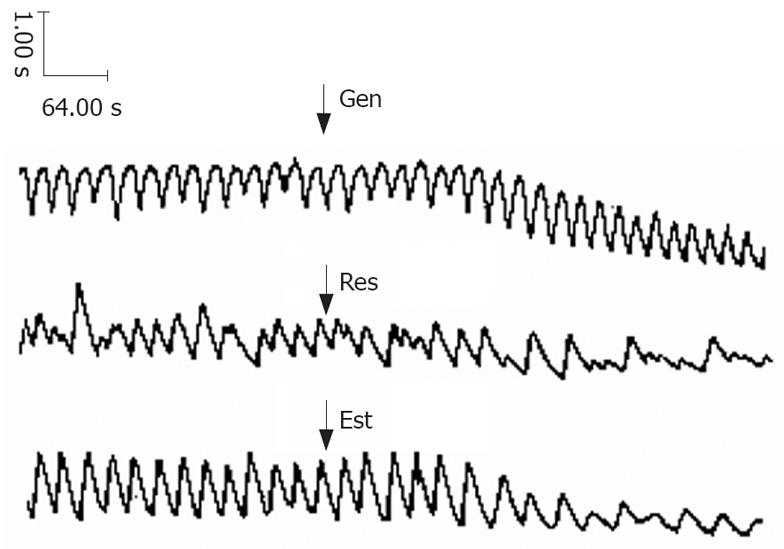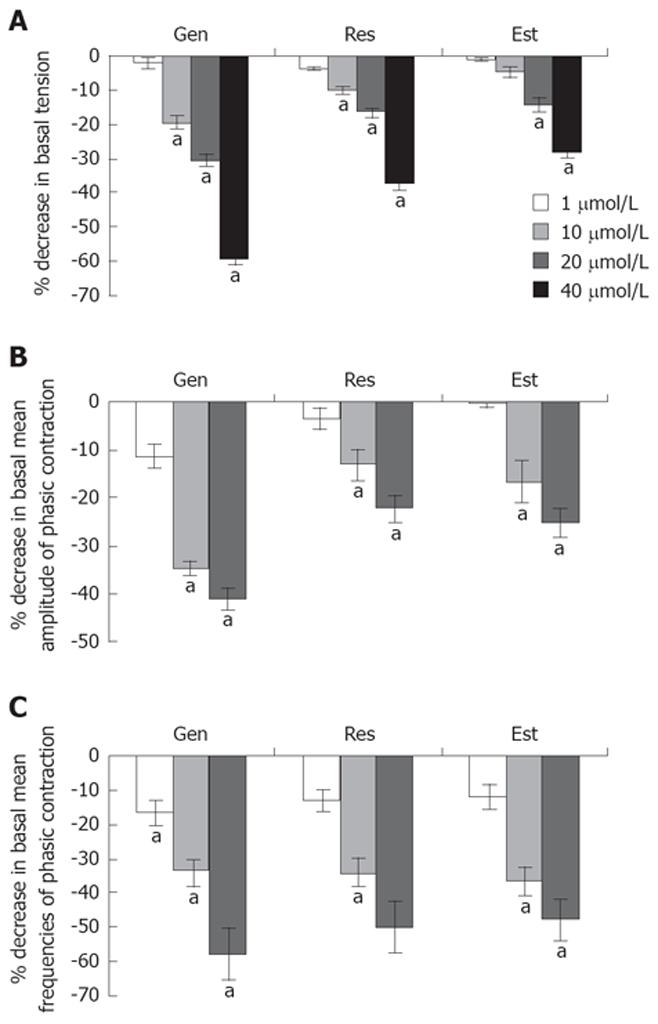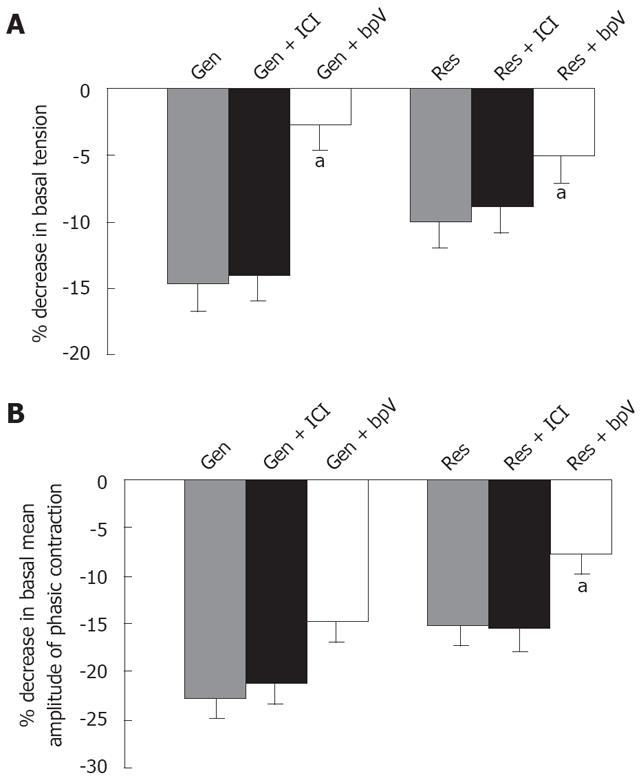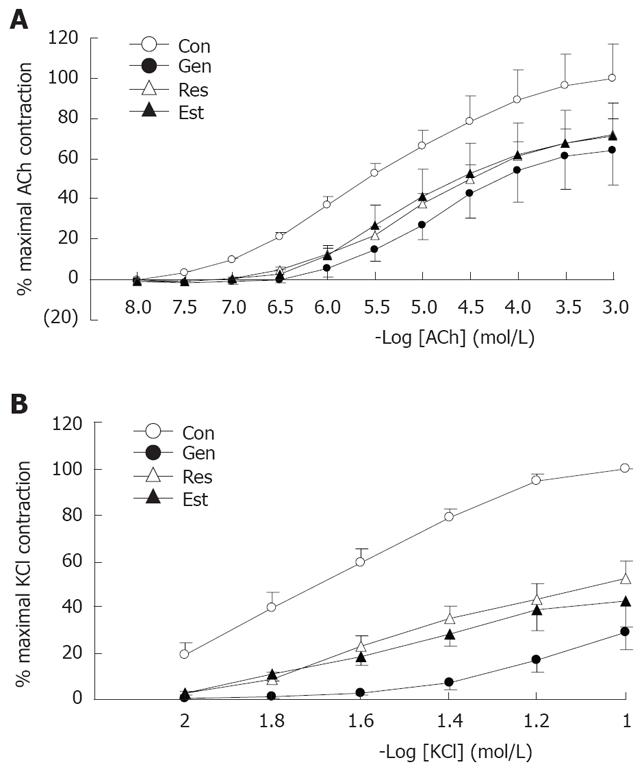Copyright
©2008 The WJG Press and Baishideng.
World J Gastroenterol. Aug 21, 2008; 14(31): 4955-4960
Published online Aug 21, 2008. doi: 10.3748/wjg.14.4955
Published online Aug 21, 2008. doi: 10.3748/wjg.14.4955
Figure 1 Sample traces showing the basal contractile activity of the gallbladder before and after the administration of 20 μmol/L genistein (Gen), resveratrol (Res) and 17β-estradiol (Est).
Figure 2 Effects of genistein (Gen), resveratrol (Res) and 17β-estradiol (Est) on resting tension (A), mean contractile amplitude (B) and (C) mean frequencies of phasic contraction in isolated guinea pig gallbladder muscle strips (n = 10).
aP < 0.05 vs solvent control.
Figure 3 Effects of genistein (Gen, 10 μmol/L) and resveratrol (Res, 10 μmol/L) on the basal tension (A) and mean amplitude (B) of phasic contraction in isolated guinea pig gallbladder muscle strips after preincubation with ICI 182780 (ICI) or bpV (phen) (bpV) (n = 5).
aP < 0.05 vs corresponding Gen or Res group.
Figure 4 Traces of ACh and CaCl2-induced contraction of gallbladder muscle strip in Ca2+-free Kreb’s solution in the absence and presence of genistein (Gen, 20 μmol/L).
Figure 5 A: Line plots showing effects of genistein (Gen, 40 μmol/L), resveratrol (Res, 40 μmol/L) and 17β-estradiol (Est, 40 μmol/L) on ACh concentration-dependent contraction curves in isolated guinea pig gallbladder muscle strips (n = 6-7); B: Effects of genistein (Gen, 40 μmol/L), resveratrol (Res, 40 μmol/L) and 17β-estradiol (Est, 40 μmol/L) on KCl concentration-dependent contraction curves in isolated guinea pig gallbladder muscle strips (n = 12).
-
Citation: Wang LD, Qiu XQ, Tian ZF, Zhang YF, Li HF. Inhibitory effects of genistein and resveratrol on guinea pig gallbladder contractility
in vitro . World J Gastroenterol 2008; 14(31): 4955-4960 - URL: https://www.wjgnet.com/1007-9327/full/v14/i31/4955.htm
- DOI: https://dx.doi.org/10.3748/wjg.14.4955













